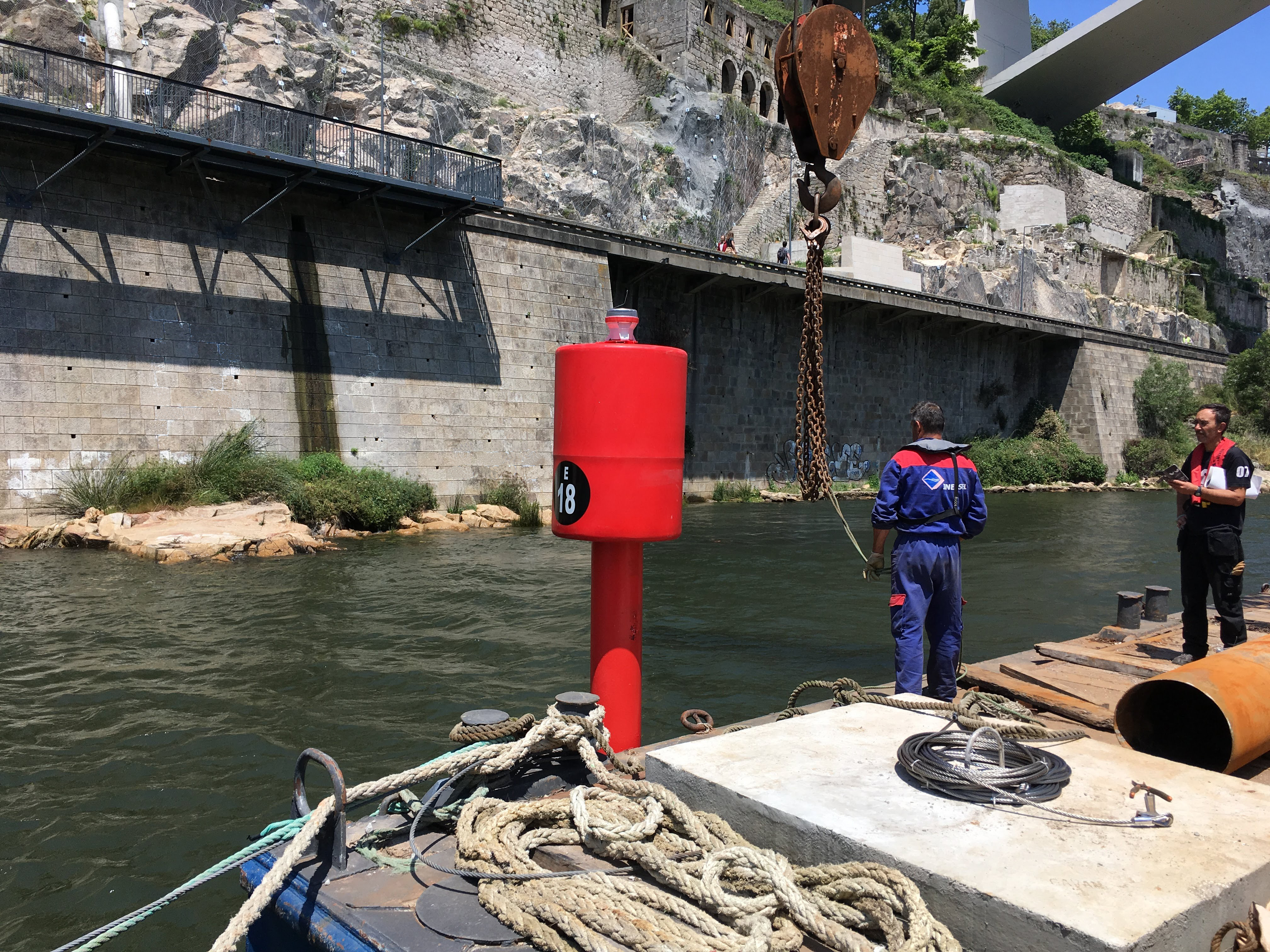Home | Projects | Floating top marks for fixed beacons in flooding rivers or channels
Floating top marks for fixed beacons in flooding rivers or channels
09-06-2020
 Instalação Bóias Estaca
Instalação Bóias Estaca
In 2018, Almarin and Lindley, in conjunction with the Portuguese Lighthouse Authority, have been working on a method to increase safety and reduce the operating cost of such channels. The top mark is designed as a buoy that floats off the pile maintaining the AtoN above the water surface, ensuring the AtoN survives undamaged to the flooding condition. Once the water level subsides a maintenance team repositions the top marks on the piles. Where piles are used as beacons to mark navigation channels a decision must be taken regarding the height of the top mark and light (“focal plane”) above the river or canal bed. In canals or rivers where the water level is stable defining the focal plane is relatively straight forward. Where the water level variation is very large the decision is complex. Beacons with high focal planes above water level will hinder light visibility or require large negative vertical divergence driving up cost. A higher focal plane increases cost due to both length of pile and superior structural requirements at the root. Beacons with a low focal plane run the risk of being fully submerged when the river floods. During flooding the beacons will not be visible and the waterway will no longer be navigable under these conditions as the beacons themselves become submerged obstacles. Of equal concern is the damage caused to the top marks and lights often in strong currents and at times with debris. When water level is restored the beaconing must be inspected and repaired to restore full navigability of the channel.
The equipment was developed during 2017/2018 and installed over the autumn of 2018 on the Douro river in Portugal. The concept was presented for the first time at the IALA congress in Incheon in May 2018 under the Industry Innovation Sessions. The product has been successfully installed and waits the winter floods in early 2019 to prove the concept